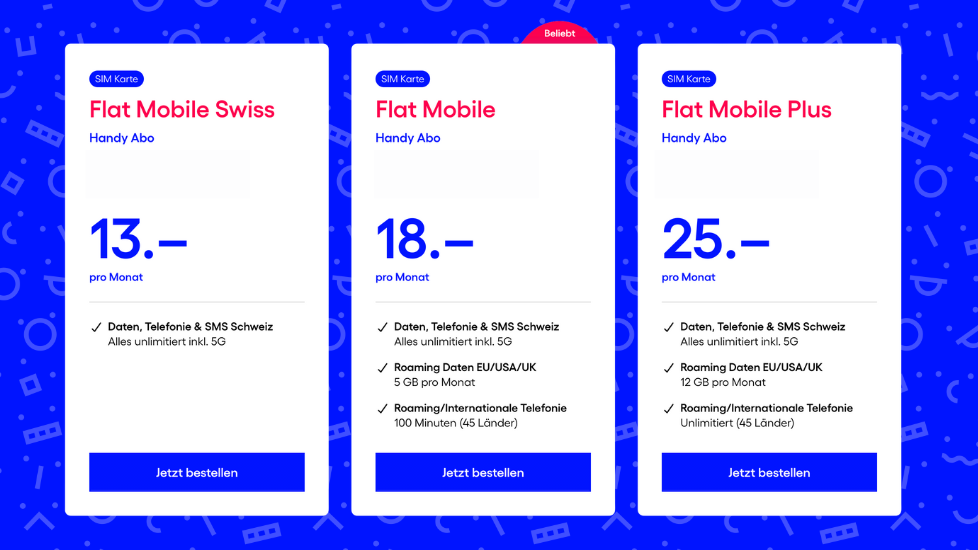Mobile internet for everyone and everything
Smartphone for the Child – What to Consider
Christmas will soon be upon us, and for some people it will probably also be the time to buy the first smartphone for their son or daughter. Whether for safety reasons, at the request of the child or simply because the time for a smartphone has come, many questions arise with the purchase. How do I protect my child from dangerous content or fraud? What should the device be able to do and what not? How do I prevent unforeseen costs? Finding good answers to these questions is not always easy. We want to take a chance and find a remedy, at least from a technical point of view!
Question 1: Smartphone or Dumbphone?
What adults do for the purpose of digital detox could also make sense for children, couldn’t it? In addition to smartphones with all their features and pitfalls, they still exist: the dumbphones of yesteryear. Phone calls, text messages, that’s it. That’s all these devices can do, and that’s all they’re supposed to do. Especially for very young children who just need a way to reach their parents or vice versa, dumbphones might be worth considering. They are extremely inexpensive to buy, usually very robust and easy to use due to the limited range of functions.

On the other hand, progress does not stop and sooner or later the child will have to rely on the features of a smartphone. Another advantage of the smart variant is that the device’s range of functions can be adapted to the child’s age via parental control apps. It doesn’t have to be the latest iPhone either. Inexpensive Android devices are relatively affordable in comparison, and those who opt for a used device save even more. After all, children in particular have to reckon with the device breaking or getting lost.
Question 2: With or Without Internet?
The more you know about the vastness of the web, the more diverse the horror of where your child might find themselves surfing. At the same time, WhatsApp, Facetime and Co are easy and barrier-free communication channels that rely on a data connection.
Our tip: Parental control apps like “Google Family Link” (Android) or integrated parental controls like “Screen Time” (iOS). With these, the app store and web browser can be blocked and usage restrictions defined. In this way, the usage experience can be continuously adapted to the age of the child, and parents retain control over what is and is not possible with the device.

This way, there is no need to forgo a data connection, the child gradually learns how to use a smartphone, and parents have the opportunity to educate the child on media literacy at the speed that is appropriate for their individual situation.
Question 3: What Should the Provider Bring to the Table?
It seems obvious to opt for the cheapest possible cell phone subscription and not for additional services like roaming volume, etc. At this point, however, a modular solution like the one from Digital Republic could also prove to be suitable.
With Digital Republic’s rate system, for example, parents can choose a low bandwidth like Flat 1 and thus come to 16 francs per month including outgoing telephony. If only the child is to be reachable, without being able to make calls themselves, the costs can even be reduced to 6 francs per month by waiving the voice option. Outgoing calls are still possible in this configuration via the data connection, for example via WhatsApp or Signal.
Another advantage of Digital Republic? Parents can use the customer portal to continuously adjust the rate to the age of the child. Does the child suddenly become a teenager who would like to watch YouTube videos? Then the bandwidth can be continuously adjusted to these needs (of course also in a declining direction, should this be necessary temporarily 😉 ).
In addition, roaming and value-added services are deactivated by default on all Digital Republic rates. So there can be no additional costs from value-added numbers or “accidentally” watching Netflix on a school trip abroad. We also do not have any minimum contract terms or cancellation periods, which means that the greatest possible flexibility and freedom is always guaranteed. Find out why we do it this way here.
Discover Our Other News Articles

The Development of Our Ideal Cell Phone Plans for Switzerland
The path to the current Trio Flat Mobile Swiss, Flat Mobile, and Flat Mobile Plus cell phone plans is also an example of how Digital Republic wants to function as a provider and where its priorities lie. We have quickly transformed ourselves from a pure data SIM provider to a cell phone plan provider. And we have completely rethought the development process.

The Affordable Mobile Provider With Award-Winning Service
When it comes to mobile providers in Switzerland, the wheat is often separated from the chaff when it comes to price. Either you pay little for your subscription and do without services like support or 5G, or you go to one of the big providers and pay more than you might like. At Digital Republic, you get both!

Why 5G Is Not Always Equally Fast
Sometimes fast, sometimes slow, sometimes suddenly 4G again. The network indicator on your smartphone suggests that it is connected to the internet via either 4G or 5G. In fact, a complex mechanism and a lot of communication between your smartphone and the network is taking place in the background to ensure that you always have the best possible connection.
